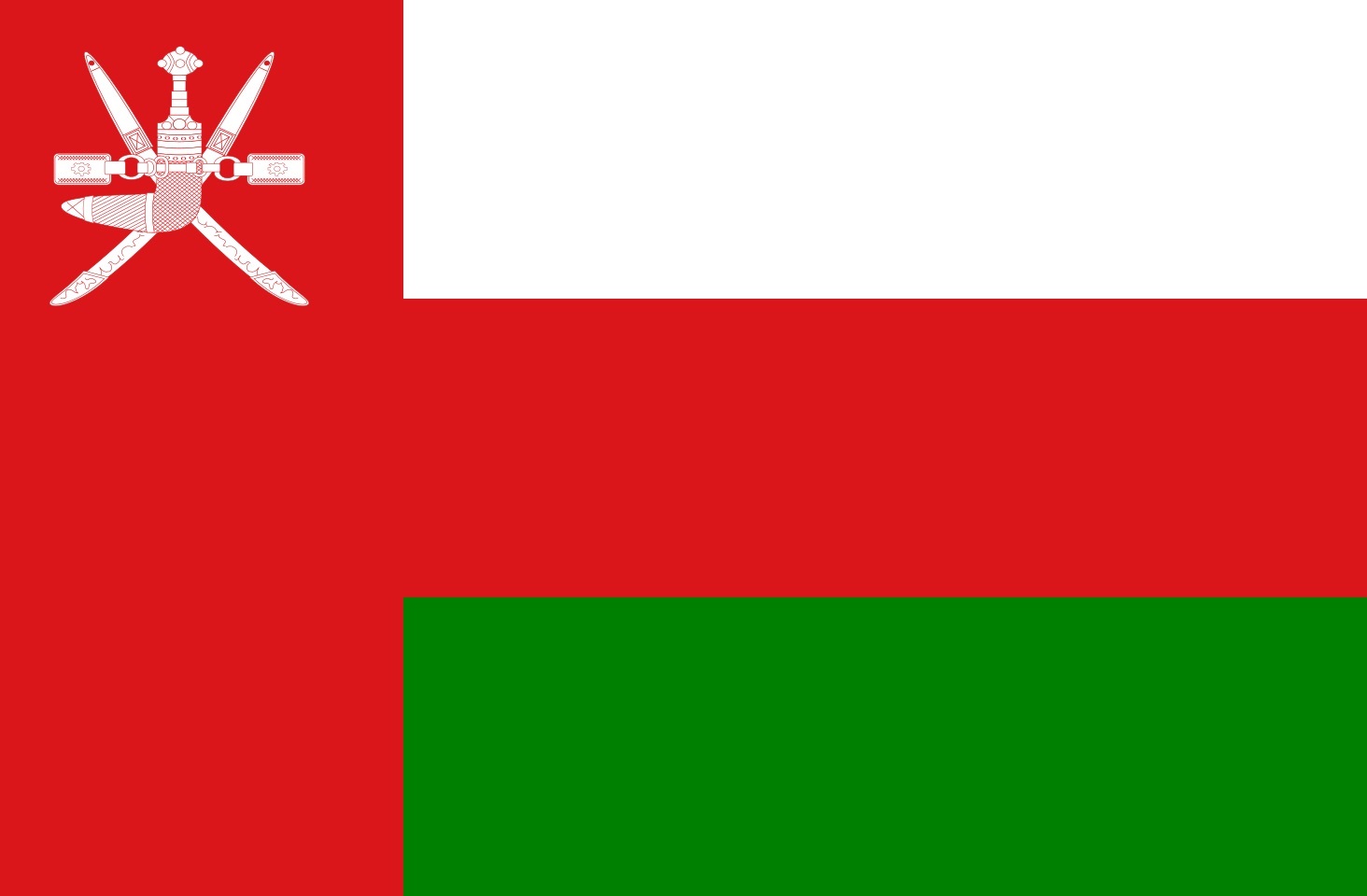
Geography

Source: This image is the intellectual property of TUBS. Redistribution under licence CC BY-SA 3.0
Area: 309,500 km2 (0% water)
Coastline: 2,092 km
Terrain: Central desert plain, rugged mountains in north and south
Highest point: Jabal Shams 3,004 m (northeast Oman)
Climate: dry desert; hot, humid along the coast; hot, dry interior
Geographical population distribution: Most of the population is concentrated in northern Oman; about 40% of the population is concentrated in coastal cities along the Gulf of Oman.
Natural resources: petroleum, copper, asbestos, marble, limestone, chromium, gypsum, natural gas
Demographics
Population: approximately 5,511,000 (2025 estimate, Worldometer)
Annual population growth: approximately 4.0% (2024–2025)
2025 population estimate: 5,573,000 (if no new data, remains)
Age distribution of population (2023):
0–14 – approximately 29.9%
15–64 – approximately 66.2%
65+ – approximately 4.0%
Fertility rate (children per woman): approximately 2.50 (2025 estimate)
Birth rate (births per 1000 people): approximately 21.6 (2023 estimate)
Mortality rate (deaths per 1000 people): approximately 3.2 (2023 estimate)
Median age: approximately 29.7 years (2025 estimate)
Life expectancy (at birth): approximately 80.0 years (2023 estimate)
Men – approximately 78.9 years
Women – approximately 82.2 years
Net migration: approximately –0.5 people per 1,000 (2023 estimate)
Languages: Arabic (official), many others due to nationals (e.g., English, Indian languages, Baluchi, etc.)
Religious groups: Vary in ratio, no newer data found – previous or missing data retained.
Ethnic groups: Focus on significant groups such as Arabs, Baluchis, Persians, others · older data remain.
Economy
GDP: approximately $83.1 billion (2023 estimate, World Bank)
GDP per capita: approximately $17,200 (2023 estimate, World Bank)
Annual GDP growth rate: 3.5% (2023 estimate, IMF)
Public debt (% of GDP): approximately 59.9% (2019, older data, no newer found)
Inflation (CPI): 1.4% (2023, World Bank)
Unemployment: 3.4% (2023 estimate, Trading Economics)
Imports: approximately $35.5 billion (2022 estimate, UN Comtrade)
Top 10 import partners (% of total imports - most recent available): UAE, China, India, USA, Germany, Japan, South Korea, Saudi Arabia, Italy, Netherlands (percentages not fully updated)
Exports: approximately $45 billion (2022 estimate, UN Comtrade)
Top 10 export partners (% of total exports - most recent available): China, India, UAE, Japan, South Korea, USA, Saudi Arabia, Qatar, Pakistan, Taiwan (exact percentages not found)
Global Competitiveness Report (World Economic Forum)
64.2/100 (2020 – rank 58/141)
Index of Economic Freedom (Heritage Foundation)
65.5/100 (2023 – rank 69/180)
Income Inequality Index (Gini – World Bank)
-
Prosperity Index (Legatum Institute)
61.5/100 (2022 – rank 64/167)
Military Power
Defence expenditure (% GDP):10.9%(2020)Politics and Government
Political system: Absolute monarchy
Sultan: Haitham bin Tariq Al Said (since 2020)
Executive power: The Sultan is both head of state and government, with the authority to appoint the Cabinet. In case of a vacancy on the throne, the Royal Family Council selects a successor. If no decision is reached, the relevant letter from the former Sultan designating a successor is followed.
Legislative power: The parliament (Council of Oman) has limited authority. It may propose laws and amendments to the Cabinet, but final legislative power belongs to the Sultan. The upper house (Majlis al-Dawla) consists of 85 appointed members serving four-year terms, while the lower house (Majlis al-Shura) has 85 members elected through direct elections for four-year terms.
Judicial power: The Sultan appoints judges and chairs the Supreme Judicial Council (established in 2012), which supervises the judiciary. The judicial system includes the Supreme Court, first-instance courts, courts of appeal, criminal and administrative courts, military courts, and Islamic courts.
Political parties: Explicitly banned by law.
Last elections: Elections for the Majlis al-Shura in 2019, with a turnout of 49.02% (713,335 voters).
Next elections: Date not announced.
Rule of Law - Human Rights
Corruption Perceptions Index (Transparency International)54/100 (2020 - position 49/180) Rule of Law Index (World Justice Project)
- Global Terrorism Index (Institute for Economics & Peace)
0/10 (2019 – position 138/163) Fragile States Index (Fund For Peace)
50.4/120 (2021 – position 136/179) Democracy Index (Economist Intelligence Unit)
3.00/10 (2020 – position 136/167) Press Freedom Index (Reporters Without Borders)
43.37/100 (2020 – position 133/180) Freedom in the World Index (Freedom House)
23/100 (2021)




